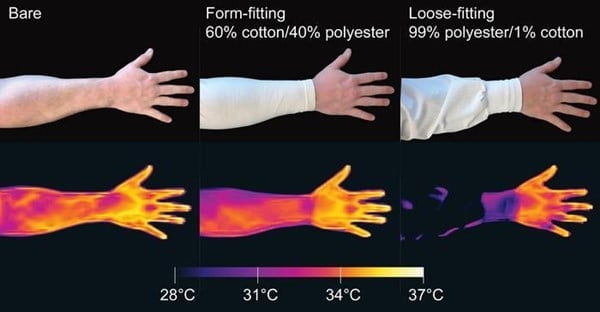Research has shown that mosquitoes, which are known to detect carbon dioxide emitted when breathing, body odor, and heat to find a target of attack, even use infrared rays (IR) are released from body temperature to find an attack target.
Professor Craig Montel’s team at the University of California, Santa Barbara (UCSB) published an experiment in the scientific journal Nature on the 23rd, showing that female Aedes aegypti mosquitoes can absorb infrared rays emitted from human skin temperature (34 °C) found that they had identified a protein that detects infrared rays in the body of the mosquito.
The Aedes aegypti mosquito transmits viruses that cause dengue fever, yellow fever, and Zika to more than 100 million people each year, and the Gambian mosquito (Anopheles gambiae) transmits the malaria parasite, which killing more than 40,000 people every year.
Male mosquitoes are harmless, but female mosquitoes need animal blood to lay eggs. In more than 100 years of research, it has been revealed that mosquitoes find targets for attack by detecting carbon dioxide, body odor, and body temperature emitted by animals, including humans.
The research team placed female Aedes aegypti mosquitoes in a cage, divided the area into an area with infrared rays from human skin temperature (°C) on one side, and an area without infrared rays on the other, and gave note which direction the mosquitoes went. to seek Other conditions, including human body odor and carbon dioxide, were the same.
As a result, it was found that the number of mosquitoes that came to areas with infrared rays 34 ° C to study was twice as much as those in areas without infrared rays.
In addition, it was found that mosquitoes were able to detect infrared rays from a distance of up to 70 cm. This means that in the case of heat, mosquitoes can detect infrared rays much further away, compared to within 10cm of the skin.
The research team also found that the heat-sensing nerve cells at the tip of the mosquito’s antennae contain a protein that detects infrared rays. Mosquitoes with the tips of their antennae removed could not sense infrared light, and mosquitoes with the gene for a temperature-sensitive protein (TRPA1) turned on could not. also go to sense infrared light.
The research team revealed that infrared rays with a wavelength of 9,300 nm generated from body temperature cannot activate the visible light protein (rhodopsin) which responds to wavelengths below 700 nm, but can activate the protein TRPA1 which located up to 70 cm away to activate. .
The research team hopes that this discovery could contribute to developing ways to control mosquito populations. Effectiveness can be increased by adding a device that emits infrared rays similar to those emitted by the skin to a mosquito trap.
The research team also explains why loose clothing is particularly good at preventing mosquito bites Not only does loose clothing prevent mosquitoes from biting the skin, but the space between the skin and clothing reduces infrared emissions, making it easier for mosquitoes to bite the skin. he found them.
Reporter Kim Hyeon-gyeong [email protected]
2024-08-23 04:07:00
#Mosquitoes #sense #infrared #rays #eliminate


